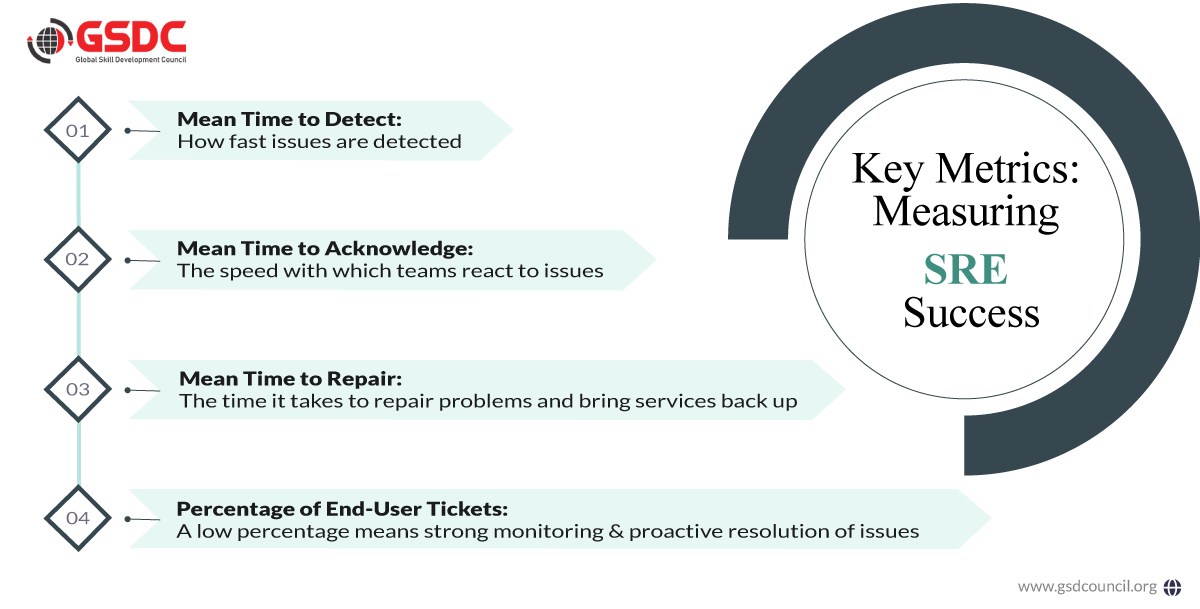With technological advancements where reliability, scalability, and user satisfaction are non-negotiable, Site Reliability Engineering emerges as a cornerstone discipline. For professionals aspiring to stay ahead in the digital era, understanding the intricacies of SRE can be a game-changer.
Here, we aim to provide you with a comprehensive understanding of SRE and its principles. You will understand how SRE contributes to system reliability, user satisfaction, and business value.
Today, we are focusing on elaborating on why professionals must adopt SRE methodologies to thrive in modern IT ecosystems and information about their framework. It will help you to understand why SRE is not just a career path but a strategic enabler for organizations.
The importance of Site Reliability Engineering lies in its ability to handle the complexities of current, distributed systems. Organisations have to handle immense pressure to deliver a perfect user experience. A delay of one second in response time can decrease customer satisfaction by 16%, page views by 11%, and online customer conversion by 7%. Under such conditions, reliability does not merely refer to availability but encompasses all aspects of performance, security, resilience, and scalability.
SRE fills this gap by using principles from software engineering and systems administration to build resilient, automated, and scalable infrastructures. From startups to tech giants, the demand for SRE professionals is growing, and their competitive salaries reflect their importance.
The Site Reliability Engineering framework is built upon three core pillars: automation, measurement, and collaboration. The use of automation eliminates the drudgery of manual, repetitive tasks, thereby enabling teams to focus on strategic problem-solving. Measurement plays a very important role by way of metrics such as SLIs, SLOs, and SLAs, allowing for data-driven decision-making in reliability improvement.
Collaboration bridges gaps between development and operations, thereby creating shared responsibility for the health of systems. This framework allows for a structured yet flexible approach to managing complex systems, thus enabling businesses to achieve higher reliability, better user experiences, and scalability in an ever-changing digital landscape.
At its core, Site Reliability Engineering is more than a profession; it is a mindset, a collection of practices, and a set of guiding principles. These pillars work together to ensure systems remain scalable, reliable, and efficient in rapidly changing environments.
SRE can be involved in all layers from infrastructure to application. They are good at problem-solving at all levels of design, development, deployment, and operations. Their holistic way of solving problems makes SRE extremely precious in complex modern environments.

For systems as complex as those currently developed, microservices, containers, APIs, and distributed architectures need constant maintenance. The practices of SRE include:
Through these methods, SREs can drastically reduce downtime, improve user satisfaction, and drive business success.
Becoming an SRE requires a combination of technical skills, practical experience, and a problem-solving mindset. Key competencies include:
The journey begins with foundational knowledge through courses and certifications, then moves to hands-on experience in labs to finally achieve competency through solving real-world challenges. Below you will get the site reliability engineer certification details.
SRE is an emerging and exciting profession, with more job opportunities worldwide. It is a highly paid profession due to competitive salaries, especially in the U.S. and Europe. Also, it's for a senior-level position that can offer significant career growth and recognition.
SREs develop a wide range of skills, blending software development, systems engineering, and automation. This generalist approach ensures flexibility in various roles and challenges, hence making the professionals more versatile and in demand.
SREs focus on automating routine work so that they can concentrate on strategic, creative, and high-impact work. This reduces the operational overhead while ensuring professionals remain engaged and challenged in their roles.
Professionals work on leading-edge technologies like Kubernetes, AI/ML, and advanced observability tools. With the rise of AI, SREs are at the forefront of ensuring reliable AI-driven systems through frameworks like ModelOps.
SREs are critical to the improvement of system reliability, user satisfaction, and business profitability. Their work ensures reduced downtime, better system performance, and enhanced user experience key drivers of organizational success.
As AI reshapes industries, SREs are adapting to a new frontier: Model Operations. This emerging framework integrates AI/ML models into applications while ensuring their reliability, security, and performance. SREs are pivotal in implementing observability, automating workflows, and maintaining the trustworthiness of AI systems.
In a world where AI-generated insights must be dependable, Site Reliability Engineering plays a crucial role in addressing challenges like model drift and hallucinations. Their expertise ensures that AI-powered solutions deliver accurate and reliable outcomes.
GSDC’s Site Reliability Engineering Certification provides foundational knowledge of Site Reliability Engineering principles, practices, and tools. It focuses on enhancing system reliability, scalability, and performance by applying engineering approaches to IT operations. The certification is ideal for IT professionals seeking to adopt DevOps and improve operational efficiency.
Site Reliability Engineering is more than just a profession; it’s a transformative approach that combines automation, scalability, and proactive problem-solving to drive business success. Whether you’re an aspiring SRE or an organization looking to adopt this model, embracing SRE principles is a step toward building reliable, efficient, and user-focused systems in the modern digital age.
If you like this read then make sure to check out our previous blogs: Cracking Onboarding Challenges: Fresher Success Unveiled
Not sure which certification to pursue? Our advisors will help you decide!